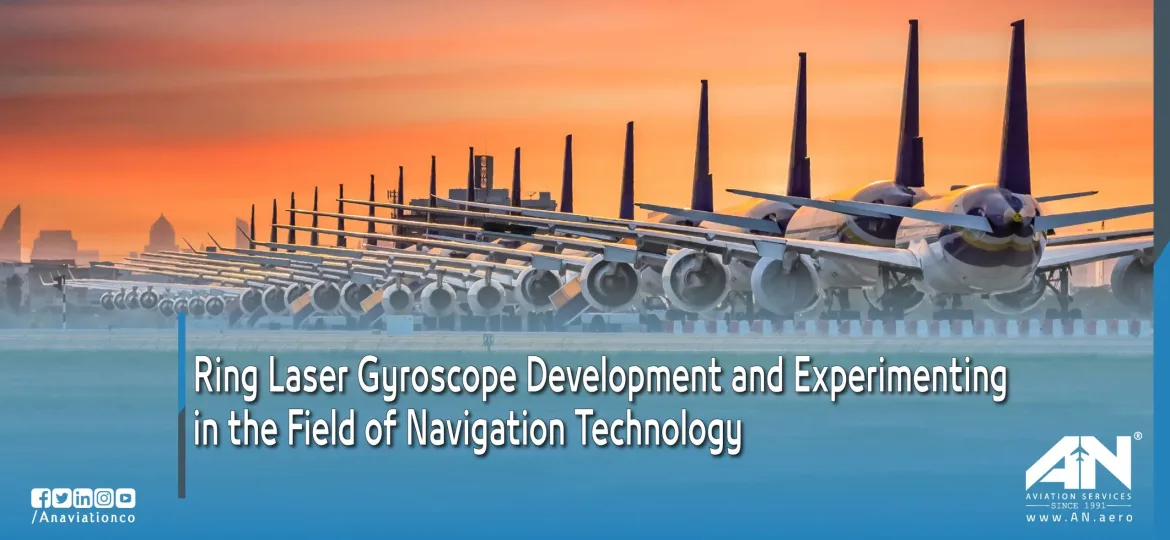
Navigation is at the heart of aviation, enabling aircraft to traverse thousands of miles with precision. Among the groundbreaking technologies driving this capability is the ring laser gyroscope (RLG)—an innovative system widely used in modern inertial navigation systems (INS). Compact, lightweight, and devoid of moving parts, this technological marvel has transformed aviation navigation by delivering unparalleled accuracy and reliability.
In this article, we’ll delve into the fascinating development of ring laser gyroscopes, their foundational physics in the Sagnac effect, and their applications in aviation navigation technology, including military aircraft and commercial aviation. Let’s explore how laser beams and advanced optics power this game-changing device.
The Science Behind the Ring Laser Gyroscope
At the core of a ring laser gyroscope lies the Sagnac effect, discovered by French physicist Georges Sagnac in 1913. This effect describes how light beams traveling in opposite directions within a closed path experience a phase shift when the system rotates. The phase shift is directly proportional to the system’s angular velocity.
In a ring laser gyroscope, two laser beams are emitted in opposite directions within a closed triangular or square optical path. When the device rotates, the interference pattern created by these counter-propagating laser beams shifts, allowing the gyroscope to measure angular velocity. Unlike traditional mechanical gyroscopes, the RLG operates without moving parts, significantly improving its durability and accuracy.
Development of the Ring Laser Gyroscope
The evolution of the ring laser gyroscope can be traced back to the 1960s when advancements in laser technology paved the way for its practical use. Early designs were large and cumbersome, but innovations over the decades, particularly by companies like Honeywell, have resulted in more compact and lightweight systems.
One notable milestone is the creation of the Honeywell Ring Laser Gyroscope (RLG), which has become a benchmark in inertial navigation systems. The digital RLG brought further advancements, integrating cutting-edge electronics for real-time data processing. As a result, RLGs became an essential component of aircraft navigation, offering superior reliability compared to older mechanical systems.
How Ring Laser Gyroscopes Work in Aviation?
In aviation, ring laser gyros (RLGs) are a critical part of inertial navigation systems (INS), which provide precise navigation without requiring external references like GPS. Here’s how RLGs contribute to aviation:
Accurate Measurement of Angular Velocity:
By detecting rotation rates around an aircraft’s axes, RLGs help pilots and onboard systems understand the aircraft’s orientation and movement.
Integration with Inertial Navigation Systems:
The data generated by ring laser gyros is fed into the INS, which calculates the aircraft’s position, velocity, and trajectory based on internal measurements.
No Moving Parts for Reliability:
Unlike traditional gyroscopes, RLGs have no moving components, making them more durable and resistant to wear and tear. This reliability is especially critical in high-performance applications like military aircraft.
Compact and Lightweight Design:
Modern RLGs are designed to be compact, allowing their seamless integration into commercial aircraft and smaller unmanned aerial vehicles (UAVs) without adding significant weight.
Experimental Applications in Navigation
As aviation technology advances, ring laser gyroscopes continue to be at the forefront of experimentation and development. Here are some areas where RLGs are making a difference:
Military Aircraft Precision:
Military planes demand precise navigation in combat zones where GPS signals may be unreliable. The RLG’s ability to operate independently of external references makes it indispensable for missions requiring high accuracy.
Integration with Fiber Optic Gyros:
Recent experiments explore the integration of fiber optic gyros (FOGs) and RLGs to combine their strengths, such as the RLG’s precision and the FOG’s resilience to thermal changes.
Advanced Aerospace Systems:
As space exploration grows, RLGs are being tested for spacecraft navigation. Their ability to withstand harsh conditions and deliver precise angular measurements makes them ideal for extraterrestrial missions.
Autonomous Aircraft and Drones:
In the realm of autonomous aviation, RLGs play a pivotal role in maintaining stability and navigation, especially in GPS-denied environments.
Advantages of the Ring Laser Gyroscope
The ring laser gyroscope has gained widespread adoption in aviation for several reasons:
- Durability: With no moving parts, RLGs are less prone to mechanical failure.
- High Accuracy: They provide precise measurements of angular velocity, even during rapid movements.
- Compact Design: The small size and lightweight nature of RLGs make them ideal for modern aircraft.
- Versatility: RLGs work seamlessly across a range of aircraft, from commercial airplanes to military jets and drones.
Challenges in RLG Development
Despite its many advantages, the ring laser gyroscope is not without challenges:
- Cost: The high precision of RLGs comes with a significant price tag, making them less accessible for smaller aviation operators.
- Bias Errors: Over time, RLGs can develop slight bias errors due to imperfections in the laser path, requiring calibration.
- Integration with Other Systems: Ensuring compatibility with other navigation and avionics systems can be complex and resource-intensive.
Future Developments in RLG Technology
The aviation industry is continually improving the capabilities of ring laser gyroscopes, with a focus on:
Enhanced Precision:
Ongoing research aims to reduce bias errors and improve accuracy for long-duration flights.
Cost Reduction:
Manufacturers are exploring ways to make RLGs more affordable without compromising performance.
Hybrid Systems:
Combining RLGs with other technologies like fiber optic gyros and GPS to create more robust navigation systems.
Conclusion: The Vital Role of RLGs in Aviation
The ring laser gyroscope is a cornerstone of modern aviation navigation, offering unmatched accuracy and reliability. From guiding commercial planes across continents to enabling military aircraft to navigate with precision in challenging environments, RLGs have redefined what’s possible in aviation.
As technology advances, the ring laser gyroscope will continue to evolve, paving the way for more efficient, safe, and reliable aviation systems. It’s a shining example of how innovation and experimentation can transform the skies.

